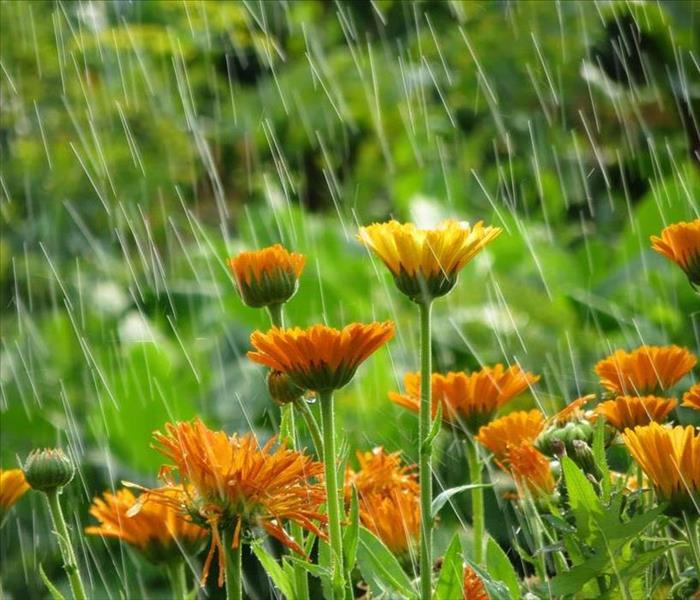How To Turn Yard Depressions Into Storm Runoff Solutions
10/20/2020 (Permalink)
Do You Have Low Spots In Your Yard That Build Up Water and Cause Flooding After Every Rain Storm?
Are you worried about what kind of damage all of that water could cause? Before you back in a load of topsoil and start leveling, consider these two options for making troublesome lawn depressions into outside flooding solutions with curb appeal.
Build a Rain Garden
One answer to that annoying swamp in your front lawn is to make it a permanent part of the landscaping. Filled with plants that do well in regions with heavy precipitation, rain gardens not only allow water to absorb into the ground slowly but filter the water, too. According to This Old House, a well-built rain garden has three plant zones:
Bottom zone – plants that can handle standing water for long periods of time
Middle zone – plants with moderate water tolerance
Top zone – plants that prefer mostly dry soil
There are many plant species, such as ferns and wildflowers, that do well in rain gardens. By doing your research and selecting the right plants, you can create a beautiful water basin to help with outside flooding.
Carve Out a Swale
Once your rain garden is built, you can utilize a well-placed swale, sometimes called a ditch, to redirect excess rain drainage away from your home and into the flower bed. A swale will also slow runoff and allow it to seep into the ground. Lining swales with stones to form a “bed” for water to flow over makes water dispersal even better, and planting shrubs along the sides will help absorb water, too. Some swales are small projects and can be done by homeowners, but bigger projects might need a professional to ensure runoff gets where it needs to go.
Creating a cohesive landscape that works to slow outside flooding will help you get through storm season in Buckingham, PA, without making too many calls to your local storm damage company.





 24/7 Emergency Service
24/7 Emergency Service
